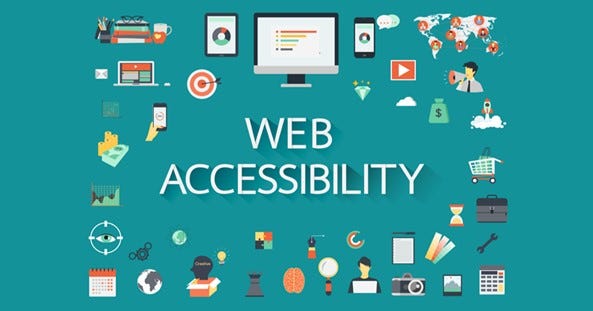In today’s digital landscape, creating an inclusive web experience is more important than ever. An estimated 15% of the global population lives with some form of disability, making it crucial for websites to be accessible to all users. Inclusive web design not only ensures that everyone can navigate and interact with your site, but it also enhances your brand’s reputation, improves SEO, and meets legal requirements. In this blog post, we’ll explore how to improve your site’s accessibility through inclusive web design principles.

What is Inclusive Web Design?
Inclusive web design is an approach that aims to create websites that can be used by everyone, regardless of their abilities or disabilities. This involves considering various aspects of design, development, and content creation to ensure that users with disabilities, including visual, auditory, motor, and cognitive impairments, can easily access and navigate your site.
Key Principles of Inclusive Web Design
- Use Semantic HTMLUsing semantic HTML helps screen readers understand the structure of your content. Ensure that you use proper HTML elements, such as headings (
<h1>,<h2>, etc.), lists (<ul>,<ol>, etc.), and landmarks (<header>,<nav>,<main>,<footer>) to convey meaning and hierarchy. This not only improves accessibility but also enhances SEO. - Color Contrast and Text SizeMake sure your website has sufficient color contrast between text and background colors. This helps users with visual impairments read your content more easily. Aim for a contrast ratio of at least 4.5:1 for normal text and 3:1 for large text. Additionally, allow users to adjust text sizes without breaking the layout of your site.
- Keyboard NavigationEnsure that all interactive elements, such as links, buttons, and forms, can be navigated using a keyboard alone. Users with mobility impairments often rely on keyboard navigation, so it’s essential to implement tab indexes and focus states to indicate which element is currently selected.
- Alternative Text for ImagesProvide descriptive alt text for all images, allowing screen reader users to understand the content of the images. Alt text should convey the purpose and context of the image, whether it’s decorative, informative, or functional. For example, instead of “image of a cat,” use “tabby cat lounging in the sun.”
- Accessible FormsDesign forms with accessibility in mind by using clear labels, grouping related fields, and providing error messages that are easy to understand. Use
<label>elements associated with their respective form controls to ensure screen readers can identify them correctly. Also, consider adding validation messages to help users correct their input. - Responsive DesignImplement a responsive design that adapts to different screen sizes and devices. This is essential for users with visual impairments who may use screen magnifiers or zoom features. A responsive design ensures that your site remains usable and visually appealing on various devices, from desktops to smartphones.
- Captions and Transcripts for MultimediaProvide captions for videos and transcripts for audio content to make your multimedia accessible to users with hearing impairments. Captions not only benefit those who are deaf or hard of hearing but also users in noisy environments or who prefer reading to listening.
- Consistent NavigationMaintain a consistent navigation structure throughout your website. Consistency helps all users, particularly those with cognitive impairments, to understand how to move through your site. Use clear, descriptive link text that conveys the purpose of the link rather than generic phrases like “click here.”
- Avoid Automatic Content ChangesAvoid elements that change automatically, such as pop-ups or auto-playing videos, as they can be disorienting for users. If automatic updates are necessary (like notifications), provide users with controls to pause, stop, or adjust the frequency of these updates.
- User Testing and FeedbackRegularly test your website’s accessibility by involving real users, particularly those with disabilities, in the testing process. Their feedback will provide invaluable insights into how your site performs for different user groups. Utilize tools like screen readers and keyboard-only navigation during testing to identify potential issues.
Conclusion
Improving your site’s accessibility through inclusive web design is not just about compliance; it’s about creating a more engaging and user-friendly experience for everyone. By implementing the principles outlined in this blog, you can ensure that your website is accessible to all users, enhancing their experience and promoting inclusivity.


No responses yet